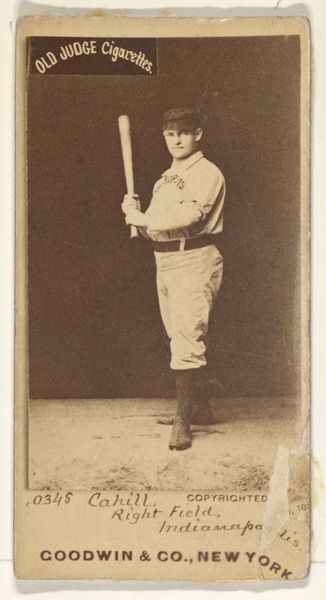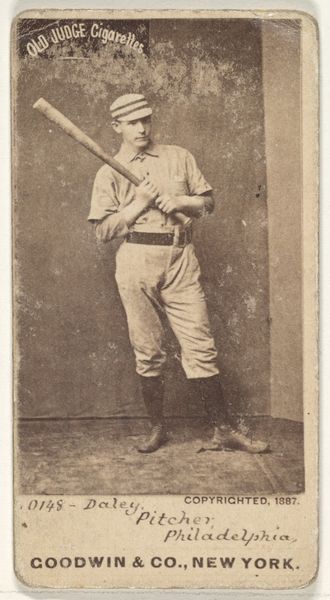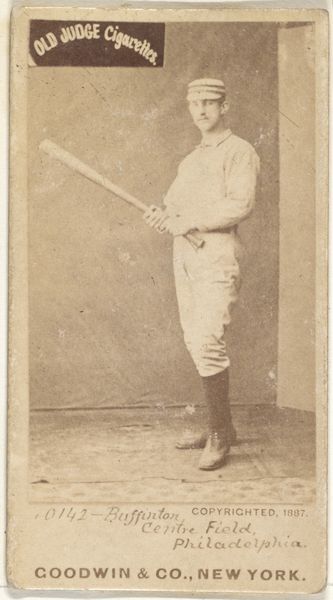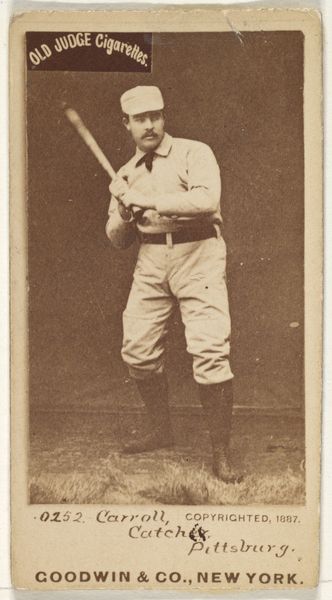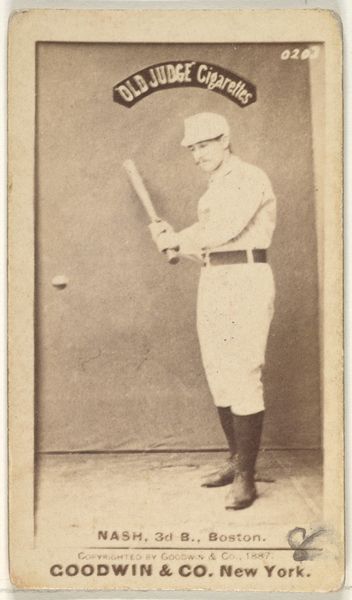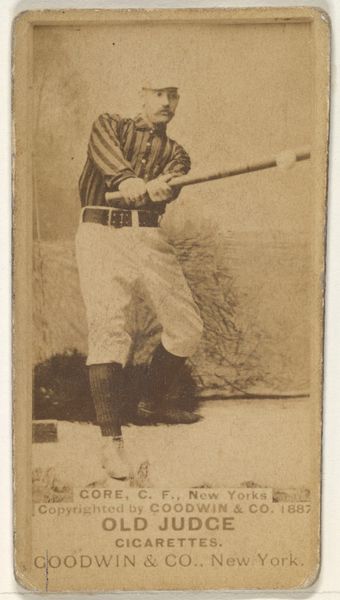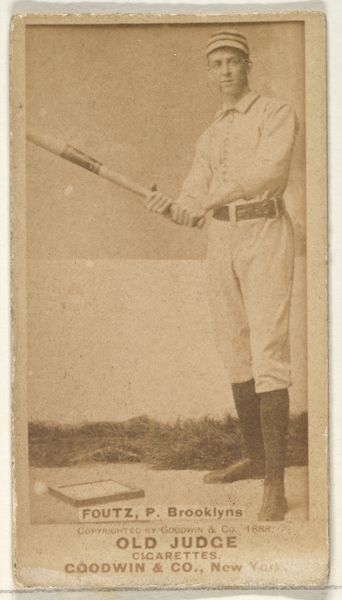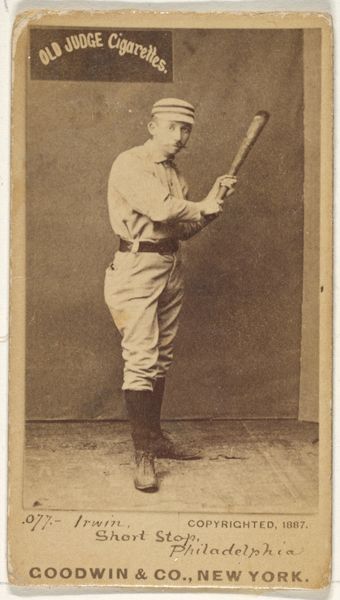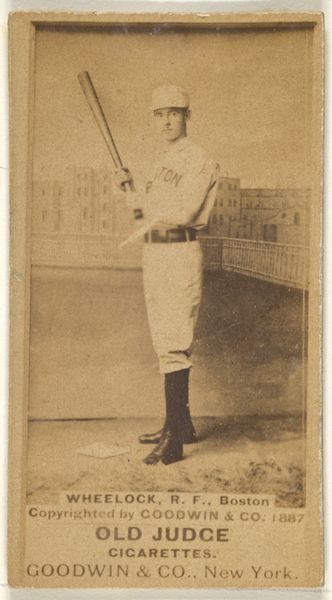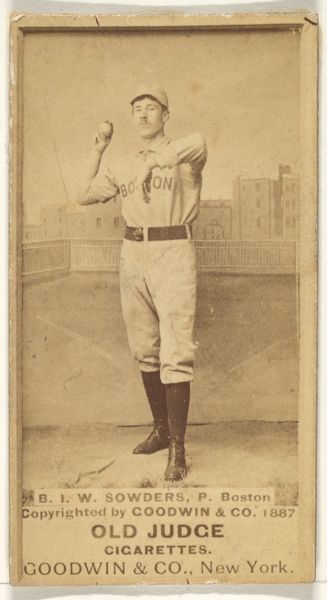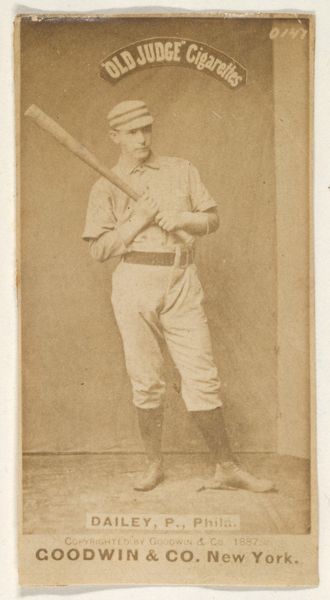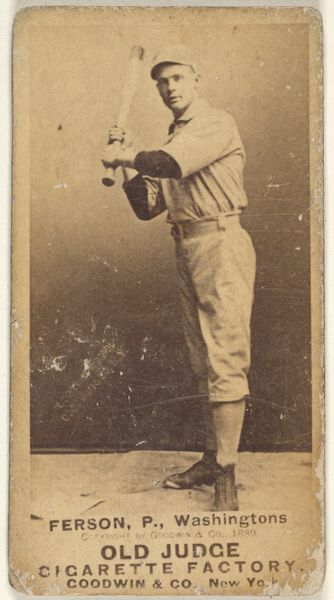
Bogart, 1st Base, Indianapolis, from the Old Judge series (N172) for Old Judge Cigarettes 1888
0:00
0:00
drawing, print, photography, gelatin-silver-print
#
portrait
#
drawing
#
still-life-photography
# print
#
impressionism
#
baseball
#
archive photography
#
photography
#
historical photography
#
old-timey
#
gelatin-silver-print
Dimensions: sheet: 2 11/16 x 1 3/8 in. (6.9 x 3.5 cm)
Copyright: Public Domain
Curator: This is a rather fascinating artifact: a baseball card featuring Bogart, a 1st baseman for Indianapolis, produced in 1888 by Goodwin & Company as part of the "Old Judge" series to promote their cigarettes. It's a gelatin silver print, quite small and intimate. Editor: My first impression is one of surprising formality. He’s very upright, serious...almost posing like a studio portrait despite holding a bat and ball. There’s this strange contrast between the gritty realism of the sport and this air of contrived gentility. Curator: Indeed. Consider the context. These cards were essentially advertisements. Cigarette companies, vying for market share, understood the burgeoning popularity of baseball. Associating their brand with sporting heroes offered powerful social cachet and widened their appeal beyond their core demographic. Editor: It speaks volumes about the constructed nature of celebrity, doesn't it? Here we see how capitalist interests use sports and, by extension, athletes, to manufacture a particular image tied to consumption. And of course, let’s not ignore the irony that this image is connected to cigarettes, a deadly product pushed to consumers through association with vitality and athleticism. Curator: Exactly! Moreover, these cards served a democratic function, making images accessible across class lines. Consider, mass-produced photographic prints disseminated as commercial ephemera helped shape a visual culture consumed across divides of income and social standing. Editor: But at what cost? These campaigns actively targeted youth, linking their aspirations with harmful habits. The “innocence” of baseball masks a much darker enterprise. Seeing this player caught in a moment between action makes me think about how our ideals are often entangled with exploitation. It makes us ponder how those historical processes affect today’s consumer culture. Curator: It reminds us to critically examine the narratives we inherit. Looking at this image now is a historical lens to how advertising and celebrity culture evolve—and often preys upon people. Editor: A reminder to constantly interrogate what images are trying to tell us, who benefits, and who pays the price. Even in something as seemingly simple as a baseball card.
Comments
No comments
Be the first to comment and join the conversation on the ultimate creative platform.
